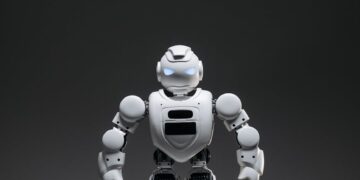<p>The digital landscape is undergoing a monumental transformation, quietly yet powerfully reshaped by the rapid ascendancy of generative artificial intelligence. Once a concept confined to science fiction, AI’s ability to create novel content, from text and images to code and music, is no longer futuristic speculation but a present-day reality. This technological wave is not merely adding new features to existing tools; it is fundamentally embedding itself into nearly every facet of our digital existence. From how we work and innovate to the ways we express ourselves creatively and navigate our daily lives, generative AI is orchestrating a profound paradigm shift, promising a future that is both more efficient and infinitely more imaginative. This article will delve into the profound impact of this integration across industries and individual experiences.</p>
<h2>The new paradigm of work: AI as a co-pilot</h2>
<p>Generative AI is redefining professional roles, moving beyond simple automation to become an indispensable co-pilot for a vast array of tasks. In the realm of content creation, marketing professionals leverage AI to draft compelling ad copy, personalize email campaigns, and generate blog post outlines, drastically reducing ideation and drafting time. Software developers are finding AI invaluable for writing boilerplate code, suggesting debugging solutions, and even generating test cases, allowing them to focus on more complex architectural challenges and innovative problem-solving. Data analysts utilize AI to surface insights from massive datasets more rapidly, transforming raw data into actionable intelligence. Even in customer service, sophisticated AI agents are handling routine inquiries, freeing human agents to address more nuanced and empathetic customer needs. This integration doesn’t necessarily replace human workers but augments their capabilities, boosting productivity, fostering efficiency, and enabling a shift towards higher-value activities. The future workforce will increasingly see AI as an extension of their cognitive abilities, enhancing rather than diminishing human potential.</p>
<h2>Unleashing unprecedented creativity and innovation</h2>
<p>Perhaps one of the most exciting frontiers for generative AI is its capacity to unlock new dimensions of creativity and innovation. Artists, musicians, and designers are now equipped with tools that can generate original compositions, visual styles, and architectural blueprints at an astonishing pace. Imagine a fashion designer feeding a concept into an AI, which then generates hundreds of unique garment patterns or textile designs, offering a springboard for human refinement. Writers can overcome blocks with AI-generated plot points or character dialogues, while game developers can rapidly prototype entire virtual worlds or character animations. This technology democratizes complex creative processes, allowing individuals without specialized training to explore and produce high-quality creative output. It serves as an ideation partner, offering variations and novel perspectives that might not emerge from human thought alone, pushing the boundaries of what is aesthetically possible and accelerating the iterative design cycle across all creative industries.</p>
<h2>Reshaping daily life: personal assistants and intelligent environments</h2>
<p>Beyond professional and creative applications, generative AI is subtly weaving itself into the fabric of our daily lives, making digital interactions more intuitive, personalized, and seamless. Consider the evolution of personal assistant technologies, which are becoming more adept at understanding complex queries and generating human-like responses, managing schedules, and even drafting emails. In entertainment, AI-driven recommendation engines are not just suggesting content but can generate personalized playlists or even storylines based on individual preferences. Smart home devices are becoming more intelligent, anticipating needs and adjusting environments without explicit commands. In education, generative AI promises personalized learning paths, creating custom study materials or exercises tailored to a student’s pace and learning style. This widespread integration enhances convenience, improves accessibility for diverse user groups, and aims to create a more responsive and adaptive digital environment that truly anticipates and caters to individual human needs.</p>
<h2>Industry transformation: efficiency, insights, and new frontiers</h2>
<p>The transformative power of generative AI extends across entire industries, driving unprecedented levels of efficiency, generating novel insights, and opening up entirely new markets. In healthcare, AI is accelerating drug discovery by simulating molecular interactions and designing new therapeutic compounds, drastically cutting down research and development timelines. Manufacturing benefits from AI in designing optimal product components, predicting maintenance needs for machinery, and optimizing supply chain logistics. The financial sector employs generative AI for sophisticated fraud detection, algorithmic trading strategies, and personalized financial advice. Retail utilizes AI for hyper-personalized marketing campaigns and inventory management that responds dynamically to market trends. The table below illustrates some key applications and benefits across sectors:</p>
<table>
<tr>
<th>Industry</th>
<th>Generative AI Application</th>
<th>Key Benefits</th>
</tr>
<tr>
<td>Marketing</td>
<td>AI-generated ad copy, personalized campaigns</td>
<td>Increased engagement, content scalability</td>
</tr>
<tr>
<td>Software Development</td>
<td>Code completion, debugging, test case generation</td>
<td>Faster development cycles, reduced errors</td>
</tr>
<tr>
<td>Healthcare</td>
<td>Drug discovery, personalized treatment plans</td>
<td>Accelerated research, improved patient outcomes</td>
</tr>
<tr>
<td>Design</td>
<td>Concept generation, rapid prototyping</td>
<td>Enhanced creativity, reduced design time</td>
</tr>
</table>
<p>These applications demonstrate how generative AI is not just optimizing existing processes but also fostering innovation and growth, allowing businesses to operate with unprecedented agility and insight.</p>
<p>The journey of generative AI from theoretical concept to an omnipresent force in our digital world has been astonishingly swift, fundamentally re-architecting the frameworks of work, creativity, and daily life. As explored, its integration into digital tools across diverse industries is not a fleeting trend but a foundational shift. It augments human potential in the workplace, unlocks new vistas of creative expression, and seamlessly enhances our personal digital interactions. This pervasive technology is enabling efficiencies, driving innovation, and offering unprecedented levels of personalization across sectors. The implications are profound: we are entering an era where human ingenuity is amplified by artificial intelligence, creating a symbiotic relationship that will continue to redefine possibilities. Embracing this evolution, understanding its capabilities, and adapting to its influence will be crucial for individuals and organizations aiming to thrive in this intelligently augmented future.</p>



















